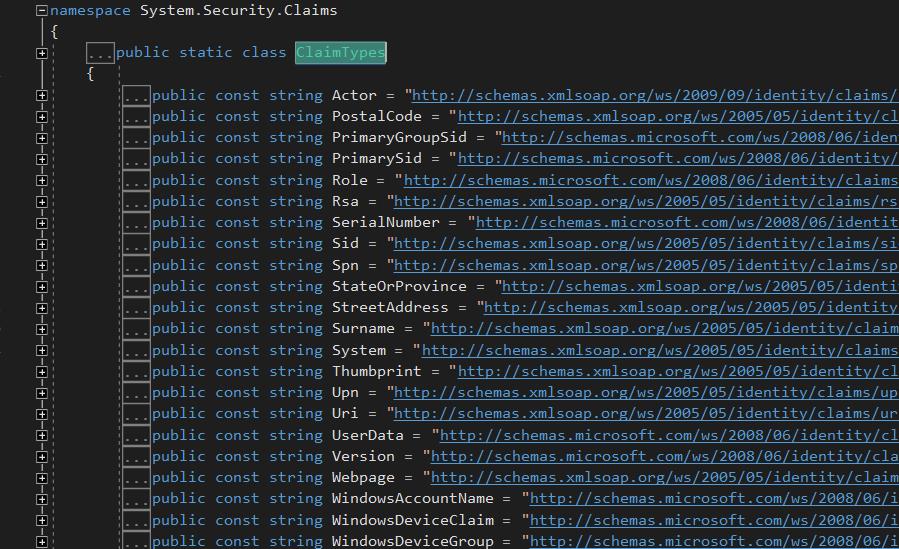netCore基于Claim登录授权
Posted 厦门德仔
tags:
篇首语:本文由小常识网(cha138.com)小编为大家整理,主要介绍了netCore基于Claim登录授权相关的知识,希望对你有一定的参考价值。
基于Claim登录授权
场景
用户登录是一个非常常见的应用场景 .
通常我们采用session存储方式。如果存储的内容较多,频繁使用时候显得有点累赘,当然可以自定义对象,但我测试没有成功。
net core的登录方式跟以往有些不同,可以说是往好的方向发展,变得更容易扩展,更方便。
配置
1.首先需要NuGet安装一个包:Microsoft.AspNetCore.Authentication.Cookies
打开项目中的Startup.cs文件,找到ConfigureServices方法,我们通常在这个方法里面做依赖注入的相关配置。
public void ConfigureServices(IServiceCollection services)
//增加Cookie中间件配置
services.AddAuthentication(options =>
options.DefaultAuthenticateScheme = "MyCookieAuthenticationScheme";
options.DefaultChallengeScheme = "MyCookieAuthenticationScheme";
options.DefaultSignInScheme = "MyCookieAuthenticationScheme";
)
.AddCookie("MyCookieAuthenticationScheme", options =>
//options.AccessDeniedPath = "/Account/Forbidden";
options.LoginPath = "/Home/Login";
);
这里的代码意思是 添加授权,添加使用Cookie的方式,配置登录页面和没有权限时的跳转页面。
2.再找到Configure方法,添加 app.UseAuthentication(),使用授权:
public void Configure(IApplicationBuilder app, IHostingEnvironment env, EFCoreContext context)
app.UseAuthentication();
3.创建一个新的 Controller,并添加登录的方法:
/// <summary>
/// 通过身份验证
/// </summary>
/// <param name="user"></param>
/// <returns></returns>
[HttpPost]
[CustomAllowAnonymous]
public async Task<LoginResult> Login([FromBody] User user)
LoginResult rs = new LoginResult();
MD5Util md5 = new MD5Util();
ZettlercnMIS.Entity.Entities.User myUser = new Entity.Entities.User
Usercode = user.UserName.Trim(),
Password = md5.MD5Encrypt(user.Password.Trim())
;
//MIS 数据库校验
if (!misContext.SysUsers.Any(t => t.Account == myUser.Usercode && t.Password == myUser.Password))
rs.Message = "fail";
rs.Success = false;
else
var users = misContext.SysUsers.Where(c => c.Account == myUser.Usercode).FirstOrDefault();
switch (users.Status)
case 1:
rs.Message = "登录失败,此用户已被冻结!";
rs.Success = false;
break;
case 2:
rs.Message = "登录失败,此用户已被删除,请联系管理员!";
rs.Success = false;
break;
default:
//创建一个身份认证
var claims = new List<Claim>()
new Claim(ClaimTypes.Sid,users.Id.ToString()), //ID
new Claim("Account",users.Account), //账号
new Claim(ClaimTypes.Name,users.Name), //姓名
new Claim("AdminType",users.AdminType.ToString()), //类型
new Claim("Company",users.Company.ToString()), //公司
;
//一组claims构成了一个identity,具有这些claims的identity就是 ClaimsIdentity
var identity = new ClaimsIdentity(claims, "Login");
// ClaimsIdentity的持有者就是 ClaimsPrincipal
var userPrincipal = new ClaimsPrincipal(identity);
await HttpContext.SignInAsync("MyCookieAuthenticationScheme", userPrincipal, new AuthenticationProperties
ExpiresUtc = DateTime.UtcNow.AddMinutes(2),
IsPersistent = false,
AllowRefresh = false
);
//写入Seesion
ViewData["userName"] = users.Name;
HttpContext.Session.SetString("userId", users.Id.ToString());
HttpContext.Session.SetString("userCode", users.Account);
HttpContext.Session.SetString("userName", users.Name);
HttpContext.Session.SetString("adminType", users.AdminType.ToString());
HttpContext.Session.SetString("Company", users.Company.ToString());
写入
//Operator operatorModel = new Operator();
//operatorModel.UserId = users.Id.ToString();
//operatorModel.Account = users.Account;
//operatorModel.Name = users.Name;
//operatorModel.AdminType = users.AdminType.ToString();
//operatorModel.Status = users.Status.ToString();
//operatorModel.Company = users.Company.ToString().Trim();
//operatorModel.OrgId = users.OrgId.ToString();
//operatorModel.LoginTime = DateTime.Now;
operatorModel.Token = Guid.NewGuid().ToString().DESEncrypt();
//OperatorProvider.Instance.Current = operatorModel;
LogVis();
rs.Message = "登录成功";
rs.Success = true;
break;
return rs;
由以上代码,我们来具体分析。
ASP.NET Core 的验证模型是 claims-based authentication 。Claim 是对被验证主体特征的一种表述,比如:登录用户名是xxx,email是xxx,其中的“登录用户名”,“email”就是ClaimType.
一组claims构成了一个identity,具有这些claims的identity就是 ClaimsIdentity
var claims = new List<Claim>()
new Claim(ClaimTypes.Sid,info.Id.ToString()), //用户ID
new Claim(ClaimTypes.Name,info.UserName) //用户名称
;
var identity = new ClaimsIdentity(claims, "Login");
ClaimsIdentity的持有者就是 ClaimsPrincipal
var userPrincipal = new ClaimsPrincipal(identity);
一个ClaimsPrincipal可以持有多个ClaimsIdentity,就比如一个人既持有驾照,又持有护照.
var userPrincipal = new ClaimsPrincipal(identity);
await HttpContext.SignInAsync("MyCookieAuthenticationScheme", userPrincipal, new AuthenticationProperties
ExpiresUtc = DateTime.UtcNow.AddMinutes(20),
IsPersistent = false,
AllowRefresh = false
);
理解了Claim, ClaimsIdentity, ClaimsPrincipal这三个概念,就能理解生成登录Cookie为什么要用之前的代码。
要用Cookie代表一个通过验证的主体,必须包含Claim, ClaimsIdentity, ClaimsPrincipal这三个信息,ClaimsPrincipal就是持有证件的人,ClaimsIdentity就是证件,"Login"就是证件类型(这里假设是驾照),Claim就是驾照中的信息。
我们在需要验证权限的Action上面加入[Authorize] 就可以了, 如果没有登录状态,会跳转到Login页面, 如何配置跳转,已经各种其他的配置,见Startup.cs文件、
public IActionResult Index()
//取用户信息
var userId = User.FindFirst(ClaimTypes.Sid).Value;
var userName = User.Identity.Name;
return View();
为什么User.Identity.Name可以取到用户名呢, 我们看看User的定义:

没错,他就是我们上面说的ClaimsPrincipal
此时,我掏出身份证(ClaimsIdentity),身份证上面有我的名称 (claim)
4.退出登录
public async Task<IActionResult> Logout()
await HttpContext.SignOutAsync("MyCookieAuthenticationScheme");
return RedirectToAction("Index", "Home");
过期报错
过期可能会报错未引用实例化对象,故加try 捕获异常

针对自定义属性:获取方式
var adminType = context.HttpContext.User.Claims.FirstOrDefault(o => o.Type == "adminType")?.Value;
下一篇:讲解一下Claim几种获取方式。
以上是关于netCore基于Claim登录授权的主要内容,如果未能解决你的问题,请参考以下文章